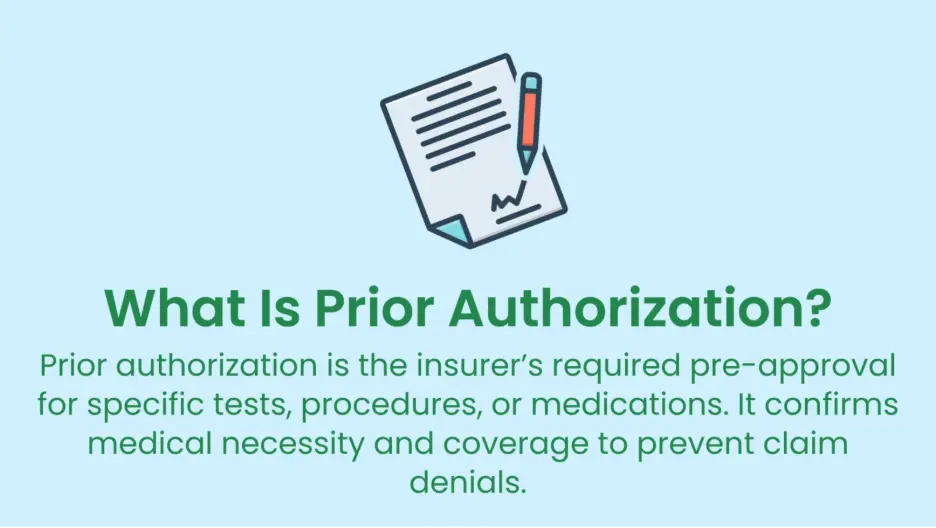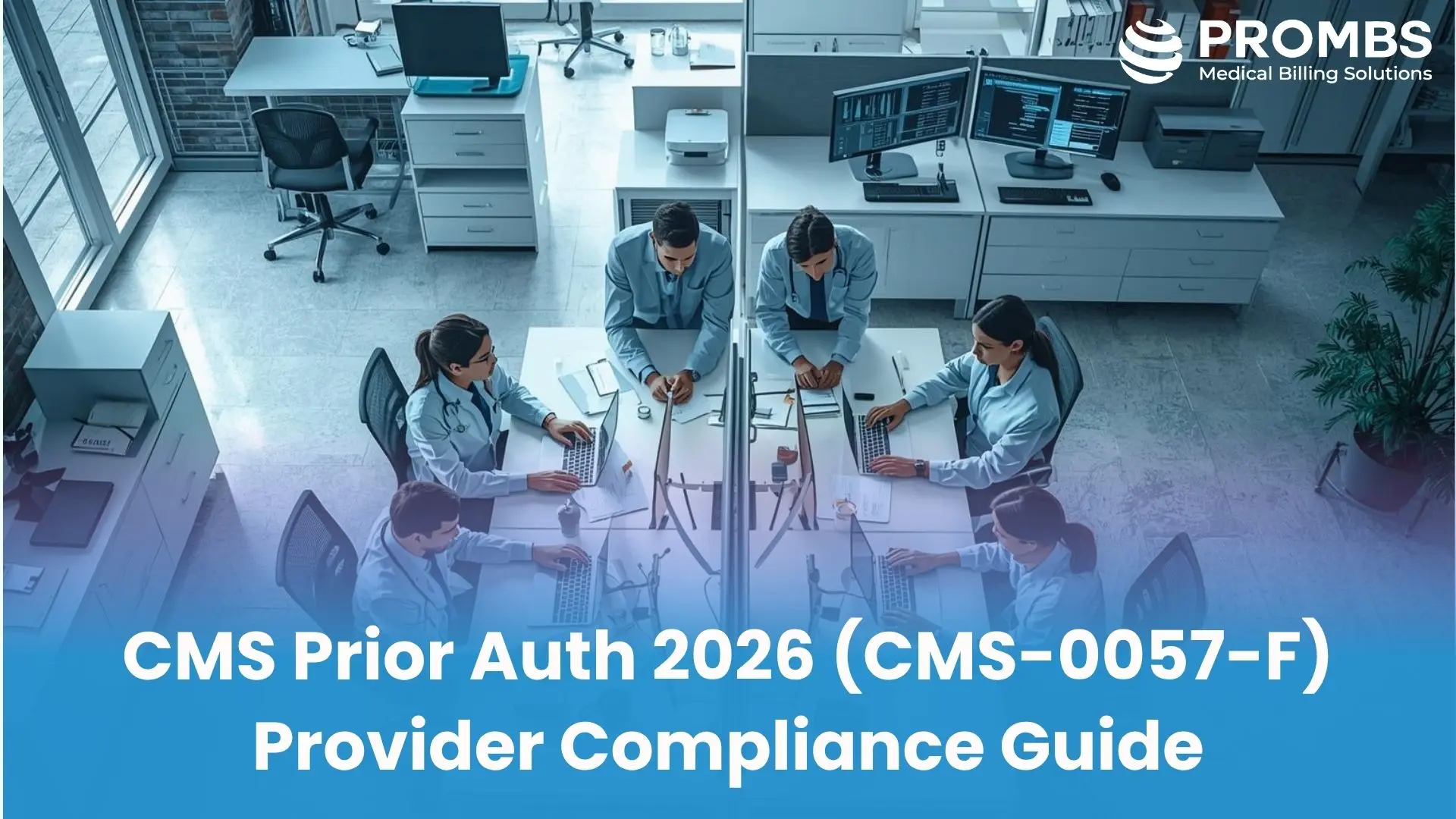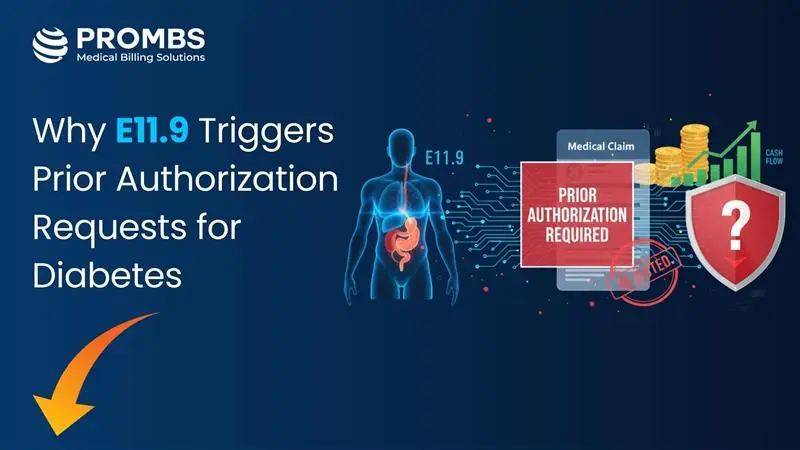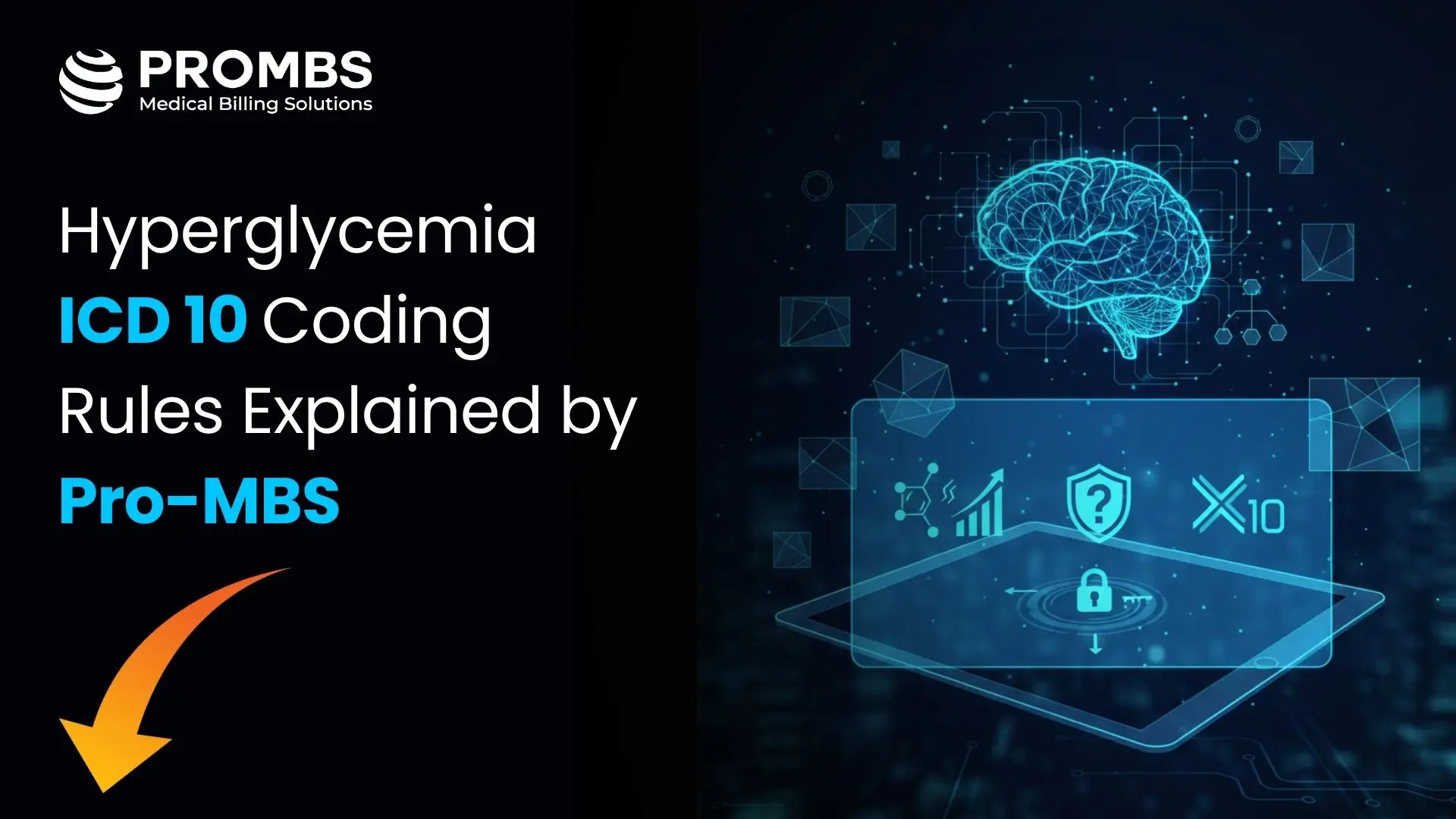The CMS Prior Authorization Final Rule, effective January 1, 2026, requires providers to move away from manual processes like fax submissions and portal uploads and adopt standardized electronic workflows.
Using API-based systems, they must meet strict turnaround times of 72 hours for urgent requests and seven days for standard cases, while ensuring audit-ready documentation that supports medical necessity. While the new turnaround standards take effect January 1, 2026, providers and vendors must continue preparing for full API-based interoperability by January 1, 2027. This transition is expected to improve revenue cycle outcomes by boosting first-pass claim acceptance and reducing delays and denials. Providers that continue to rely on outdated manual methods risk slower approvals, increased denial rates, and higher audit exposure.
For healthcare providers, the 2026 CMS Prior Authorization Final Rule is more than a compliance deadline; it is a strategic opportunity to modernize revenue cycle workflows. By shifting early to API-based prior authorization systems, organizations can streamline payer communications, minimize administrative burden, and secure faster approvals. Practices that act now will not only avoid costly disruptions in 2026 but also position themselves for seamless interoperability in 2027 and beyond.
What Is Prior Authorization?
Prior authorization is the insurer’s approval required before certain treatments, tests, or medications can be provided. It ensures medical necessity and coverage but can sometimes delay care if not managed efficiently.

Why is 2025 Crucial for Defining Scope and Meeting the Deadline?
The CMS prior authorization requirement applies to Medicare Advantage, Medicaid, CHIP, and federally facilitated ACA marketplace plans. It targets high-volume and high-cost services such as advanced imaging, selected surgeries, and specialty medications. It impacts both inpatient and outpatient care, requiring providers, payers, and EHR vendors to implement FHIR-based electronic prior authorization processes, streamline documentation and workflows, and comply with updated turnaround times and audit-readiness standards.
Risk Point: Delayed adoption of the new prior authorization requirements can result in a surge of avoidable claim denials, lengthen reimbursement cycles due to repeated resubmissions, and increase exposure to payer audits triggered by incomplete or non-compliant documentation. Providers that postpone the transition risk falling behind early adopters, losing revenue stability, and facing intensified administrative burdens at a time when compliance demands are tightening.
Providers have only a few months left to prepare for the upcoming compliance deadlines, align their internal workflows, and adopt API-based prior authorization processes. Acting now is critical to avoid last-minute disruptions, reduce the risk of claim delays and denials, and ensure a smooth transition ahead of the 2026 CMS implementation.
To meet the 2026 CMS prior authorization mandate effectively, providers must act on several critical operational priorities, including system upgrades, workflow standardization, and proactive compliance checks:
• Reconfigure EHR and clearinghouse interfaces to enable FHIR-compliant ePA transactions
• Implement standardized documentation templates aligned with LCD-driven medical necessity criteria
• Define and enforce workflow governance with measurable SLAs for prior authorization processing
• Perform internal mock audits to validate operational and compliance readiness ahead of the January 2026 deadline
Technical Comparison: 2025 vs. 2026 PA Workflows
A detailed side-by-side comparison that illustrates how prior authorization workflows will transition from traditional manual methods such as fax submissions, phone calls, and portal uploads to the WISeR-compliant, API-driven electronic model required by the 2026 CMS Prior Authorization Final Rule, showcasing key differences in turnaround times, documentation standards, interoperability, and audit readiness.
| Workflow Element | Legacy Approach (Pre-2026) | WISeR-Compliant Model (2026) |
|---|---|---|
| Submission Method | Portal uploads, fax, manual calls | FHIR R4-based APIs with structured payloads |
| Decision Timeframes | Often 14–21 days | 72 hours for urgent, 7 days for standard |
| Coverage Scope | Payer-dependent, fragmented | Mandated for MA, Medicaid, CHIP, ACA QHPs |
| Documentation Format | Inconsistent, unstructured notes | Standardized templates aligned with LCDs and Prior Auth Support API resources |
| Audit & Compliance | Predominantly post-payment audits | Pre-service utilization management + post-payment verification |
| Performance Monitoring | Manual spreadsheets | Integrated KPI dashboards in EHR/RCM platforms |
Providers should proactively request detailed vendor test plans and secure access to sandbox environments by mid-2025 to validate end-to-end data exchange, confirm the accuracy of request and response logging, and identify potential interoperability gaps early, ensuring seamless adoption of the WISeR-compliant, API-driven prior authorization workflows well ahead of the 2026 CMS implementation deadline (CMS Prior Authorization Final Rule, 2024; ONC Interoperability Standards Guidance, 2025).
Policy-Driven Changes Providers Must Address
Providers preparing for CMS prior authorization 2026 must align their technology, documentation, and workflows with the new federal requirements. To achieve this modernization, providers must address four core areas:
FHIR-Based ePA Adoption:
CMS now mandates payers to adopt the Prior Authorization Support (PAS) API to streamline clinical documentation exchange. Providers must ensure their EHR systems are FHIR R4–compatible, capable of consuming and submitting structured data with C-CDA attachments and decision payloads to support compliant and efficient prior authorization workflows.
Determination SLAs:
Urgent prior authorization requests must be resolved within 72 hours, while standard requests require resolution within 7 calendar days. Providers should implement PA aging dashboards to track request timelines and escalate pending cases before deadlines to ensure compliance and avoid delays.
Expanded Scope:
The new requirements apply to Medicare Advantage, Medicaid Fee for Service, CHIP, and ACA Qualified Health Plans, with commercial payers expected to align voluntarily with these federal standards.
Compliance Reporting:
CMS will track turnaround times, approval and denial rates, and justification notes, while providers must integrate these compliance metrics into internal governance dashboards to maintain readiness and transparency.
How to Get Your Organization Ready for PA 2026?
The countdown to January 2026 has begun. Providers can no longer rely on fax machines, portal uploads, or manual spreadsheets to manage prior authorizations. To stay compliant and avoid denials, workflows must shift to WISeR-compliant, API-driven processes with standardized documentation and real-time performance tracking. A technical readiness program should address the following domains:
IT & Interoperability
Verify that your EHR and clearinghouse platforms fully support PAS API endpoints and follow a CMS-approved implementation roadmap. Systems should be able to poll payers in real time for authorization status updates and log all request–response transactions for audits. Conduct integration and data-exchange testing early to ensure reliable handling of structured decision payloads.
Clinical Documentation Alignment
Configure EHR templates to capture all LCD required clinical data elements including diagnostic codes, prior treatment history, and supporting medical indications. Integrate decision support prompts that flag missing information before submission. Focus on high authorization burden services such as orthopedic fusions, neurostimulators, or advanced imaging to reduce downstream denials.
RCM Workflow & Governance
Establish a centralized prior authorization intake module with queues that prioritize urgent cases. Define SLA driven escalation protocols to ensure compliance with CMS 72 hour and seven-day timelines. Integrate PA approvals directly into the claim release workflow, preventing claims from being submitted without a valid authorization on file.
Staff Competency
Train staff to interpret payer specific prior authorization policies and operate API enabled ePA tools effectively. Ensure they understand proper linkage of ICD 10 CM, CPT, and HCPCS codes to demonstrate medical necessity. Create a cross functional PA readiness team spanning RCM, IT, compliance, and clinical leaders to maintain oversight and address process gaps.
What are the Core KPIs for Compliance and RCM Performance?
Providers should implement robust, real-time KPI dashboards that integrate data from EHR systems, payer APIs, and internal workflow tools to monitor both compliance performance and revenue cycle efficiency. These dashboards serve as an early-warning system for operational bottlenecks and provide actionable insights to improve prior authorization turnaround times, reduce denial rates, and enhance financial outcomes. Key metrics include:
PA Submission-to-Decision Time: Tracks how long it takes payers to respond to prior authorization requests, broken down by payer and urgency level.
PA-Linked Denial Rate: Measures the percentage of claims denied due to missing or delayed prior authorization.
Approval Rate vs. Documentation Completeness: Compares approval rates with the quality and completeness of submitted documentation, highlighting gaps that need improvement.
Pre-Auth Aging Queue: Flags requests that are approaching SLA deadlines so staff can escalate them before they risk denial or non-compliance.
Impact on Days in A/R and Clean-Claim Rate: Shows how prior authorization performance affects payment timelines and the proportion of claims processed correctly on the first submission.
Payer-Level Benchmarking: Allows providers to compare payer performance and use the data to negotiate better contract terms.
Board-Level Metric: CFOs and RCM leaders should monitor the cost of PA-related denials and delays as a percentage of net patient revenue, ensuring that financial losses linked to prior authorization are visible at the leadership level.
Workforce Strategy: Choosing the Right PA Model
A comparison of staffing models for managing prior authorization operations effectively and compliantly:
| Model | Description |
|---|---|
| In-House Model | Retains full control of processes but requires significant investment in staff, IT infrastructure, and governance oversight. |
| Outsourced Model | Uses specialized prior authorization (PA) teams and AI-driven automation to manage high-volume, low-complexity services efficiently. |
| Hybrid Model | Keeps critical, specialty-specific PAs in-house while outsourcing routine and high-volume procedures to external partners. |
Partners must demonstrate a minimum of 98 percent clean claim acceptance to ensure consistent reimbursement performance, while maintaining full SOC 2 and HIPAA compliance to safeguard patient data and meet regulatory standards. They should also provide transparent, auditable decision-turnaround reporting that allows providers to monitor payer responsiveness, identify bottlenecks, and support both compliance validation and operational improvements.
4 Key Steps for 2025 to Prepare for CMS Prior Authorization 2026
A well-defined and focused roadmap is essential to guide providers and their partners through the 2026 prior authorization transition, ensuring operational readiness, regulatory compliance, and stable reimbursement workflows. To build this roadmap effectively, organizations should take the following key steps:
Conduct a comprehensive readiness gap analysis across IT systems, documentation practices, workflows, and staffing: Identify deficiencies in EHR capabilities, integration gaps with payer APIs, inconsistent documentation standards, and workforce skill shortages that could delay compliance or increase denial rates.
Require vendor readiness documentation and testing evidence: Ensure technology and clearinghouse vendors can demonstrate WISeR-compliant, API-based ePA functionality through detailed test plans, sandbox results, and proof of successful payer transactions.
Align PA SLA reporting and denial analytics with executive dashboards: Integrate prior authorization turnaround times, approval and denial trends, and SLA adherence into leadership-level dashboards, enabling CFOs, COOs, and RCM directors to monitor both compliance and financial impact in real time.
Engage an experienced RCM partner for high-volume services to stabilize performance during the transition: Leverage external expertise to handle complex authorization workflows for services such as imaging, infusion therapy, or specialty care, minimizing operational disruption while internal teams adapt to the new standards.
Partner with Pro-MBS for Prior Authorization Services
At Pro-MBS, we focus on streamlining prior authorization workflows to help providers meet the new CMS 0057 F and WISeR compliance standards. Our dedicated team verifies patient eligibility upfront, checks payer policies, and collects the required clinical documentation to ensure every request is accurate, complete, and ready for submission.
We transition providers from manual fax and portal-based processes to FHIR enabled, API driven electronic prior authorization (ePA) workflows. By aligning requests with LCD based medical necessity criteria and tracking each case against CMS turnaround deadlines of 72 hours for urgent requests and 7 days for standard cases, we reduce delays, prevent denials, and improve approval speed.
With real time follow up, escalation protocols, and transparent reporting, Pro-MBS ensures consistent compliance and operational efficiency. This proactive approach minimizes authorization related denials, accelerates approvals, and keeps your revenue cycle audit ready while allowing clinicians to focus on patient care.
Schedule Your Free PA Consultation Today
FAQs
What is the CMS Interoperability and Prior Authorization Final Rule (CMS-0057-F)?
The CMS-0057-F rule, finalized in January 2024, requires payers including Medicare Advantage, Medicaid, CHIP, and ACA plans to adopt FHIR based APIs for electronic prior authorization. Providers must be ready by Jan 1, 2026 for new turnaround times (72 hours / 7 days) and continue preparing for full API compliance by Jan 1, 2027.
What is the criteria for prior authorization?
Prior authorization in 2026 is approved when the requested service is medically necessary, backed by accurate diagnosis codes, clinical documentation, and test results, and is a covered benefit under the payer’s policy. Requests must be submitted with the correct CPT or HCPCS codes and supporting records through a FHIR based electronic prior authorization (ePA) system, which enables payers to apply their rules and issue decisions within 72 hours for urgent cases and 7 days for standard cases under CMS-0057-F.
How to get prior authorization from Medicare?
To get prior authorization from Medicare, submit a complete request through your EHR or payer portal that includes the required forms, diagnosis codes, and supporting clinical documentation. Medicare reviews the request and issues an approval or denial within the required timeframes of 72 hours for urgent cases and 7 days for standard cases.
What is CMS prior authorization rule 2026?
The CMS prior authorization rule 2026 is a federal mandate that requires certain payers including Medicare Advantage, Medicaid, CHIP, and ACA Qualified Health Plans to use FHIR based electronic prior authorization (ePA) systems. Starting January 1, 2026, it enforces standardized data exchange and strict decision timelines of 72 hours for urgent requests and 7 days for standard requests, improving approval speed, reducing denials, and ensuring timely access to medically necessary care.
Does Medicare require prior authorization in 2026?
Yes, starting in 2026, Medicare will begin piloting prior authorization requirements in six states under the WISeR model, applying preapproval for a select group of services. Medicare Advantage plans already require prior authorization for many services, so the new rule expands this requirement into select parts of Original Medicare rather than introducing it for the first time.
What is the final rule of patient access API?
The Patient Access API final rule is a CMS regulation that requires payers to use FHIR based APIs to give patients secure access to their claims, clinical, and encounter data. By 2027, it also includes sharing prior authorization details to improve transparency and support timely care decisions.
What is the purpose of a prior authorization?
The purpose of prior authorization is to ensure that a proposed treatment, test, or service is medically necessary, covered by the payer, and compliant with policy guidelines before it is provided. This helps control costs, prevent inappropriate care, and reduce claim denials.
Why is it so hard to get a prior authorization?
Getting prior authorization can be hard because payers require detailed documentation and clear proof that the service is medically necessary. Delays often happen when requirements differ between payers, paperwork is incomplete, or the process relies on manual steps instead of electronic systems.
What are the common services that need prior authorization?
Common services that often require prior authorization are those that are high-cost or need medical necessity verification. These typically include:
- Advanced imaging tests such as MRI and CT scans
- Certain elective or high-cost surgeries
- Specialty medications, especially injectables or biologics
- Durable medical equipment like wheelchairs or oxygen supplies
- Rehabilitation services such as physical or occupational therapy
- Some inpatient admissions and extended hospital stays
Note: The list of services requiring prior authorization often varies based on the patient’s insurance plan, the payer’s internal medical necessity criteria, and any state or federal policy updates. Providers must routinely review payer guidelines and maintain up-to-date reference lists to ensure requests are submitted for the correct services, minimizing the risk of preventable denials and delays in care delivery.



